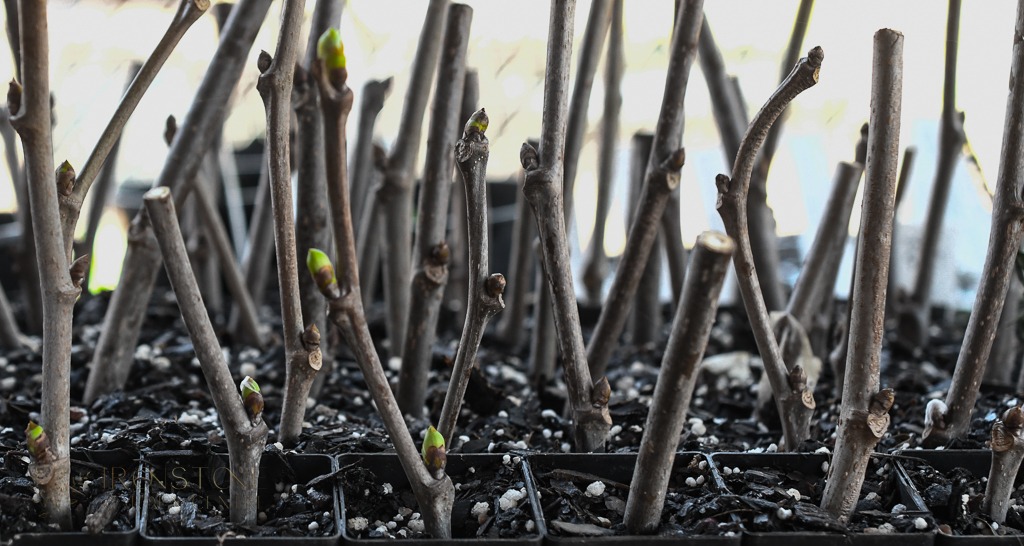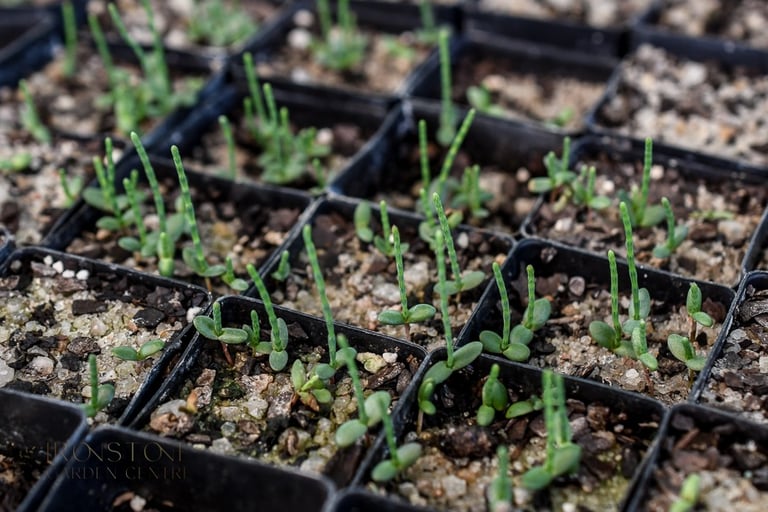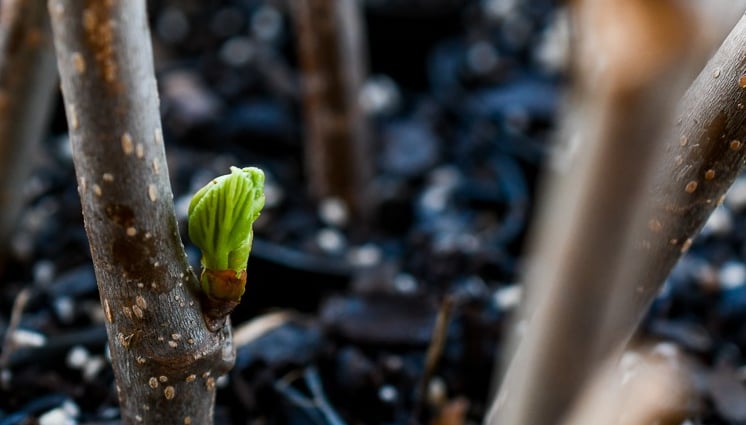Plant Propagation Demystified


Propagation by cuttings and seeds are fundamental methods we employ at our nursery to ensure you receive healthy, robust plants. Each method has its unique processes, benefits, and drawbacks. This guide will cover the intricacies of these methods, comparing them, and discussing their implications for Australian gardeners.
Propagation by cuttings involves taking a piece of the parent plant—whether it’s a stem, leaf, or root—and encouraging it to develop into a new, independent plant. This method is not only fascinating but incredibly rewarding, especially when you see your new plant thriving.
Types of Cuttings
1. Stem Cuttings: The most common type, where a segment of the stem with leaves and nodes is cut. Examples include roses and many houseplants like pothos and philodendrons.
2. Leaf Cuttings: Used for plants that can grow new roots and shoots from a leaf. This is common for succulents like jade plants.
3. Root Cuttings: Involves cutting a section of the root to grow a new plant. This is often used for plants like blackberries and horseradish.
Steps for Propagation by Stem Cuttings
1. Select the Plant:
- Choose a healthy parent plant free of diseases and pests. For example, when propagating our Purple Terrazza Roses, we select the most vigorous, disease-free specimens.
- Ensure the plant is well-hydrated and not stressed.
2. Take the Cutting:
- Use a clean, sharp knife or pruning shears. For our herbs like rosemary and thyme, we cut a 4-6 inch section of the stem just below a node (the point where a leaf attaches to the stem).
- Ensure the cutting has at least 2-3 leaves. Remove the lower leaves to expose the node.
3. Prepare the Cutting:
- Dip the cut end in rooting hormone powder or gel to encourage root development (optional but beneficial). We often use this for our more challenging-to-root plants like certain rose varieties.
- Let the cutting dry for a few minutes to form a callus over the cut area, reducing the risk of rot.
4. Plant the Cutting:
- Fill a small pot with a well-draining potting mix (a mix of perlite and peat moss works well).
- Insert the cutting into the soil, ensuring at least one node is buried.
- Firm the soil around the cutting to hold it in place.
5. Provide the Right Environment:
- Water the cutting gently to settle the soil.
- Cover the pot with a plastic bag or place it in a propagator to maintain high humidity.
- Place the pot in a warm, bright location with indirect light.
6. Care for the Cutting:
- Keep the soil moist but not waterlogged.
- Ventilate occasionally to prevent mould and mildew.
- After a few weeks, gently tug on the cutting. If you feel resistance, roots have started to form.
7. Transplanting:
- Once the cutting has a good root system (usually 4-6 weeks), it can be transplanted to a larger pot or into the garden.
- Acclimate the new plant to its environment gradually by exposing it to more direct light and normal humidity levels over a week.
Propagation by cuttings is effective because of the plant’s natural ability to regenerate and produce new growth. Here are the key reasons:
Totipotency of Plant Cells
Totipotency refers to the ability of a single plant cell to develop into a complete plant. Plant cells retain the genetic information and capability to regenerate the various tissues and organs needed for growth. When we take a cutting, the cells at the cut site can differentiate and develop into roots, stems, and leaves, forming a new plant.
Hormonal Influence
- Auxins: These plant hormones play a crucial role in root development. When a cutting is taken, the concentration of auxins at the cut end increases, stimulating root formation.
- Cytokinins: These hormones promote shoot growth and development. The balance between auxins and cytokinins helps in the successful establishment of the cutting.
Nodes are regions on the stem where leaves attach and contain meristematic tissue, which is a source of undifferentiated cells capable of division and growth. The presence of nodes in stem cuttings ensures that there are active cells ready to produce roots and shoots, facilitating the growth of a new plant.
When a cutting is taken, the plant initiates a wound response that includes the formation of a protective callus tissue over the cut surface. This callus tissue helps to prevent infection and can give rise to new roots. The plant redirects resources and hormones to the wound site, promoting the development of new tissues.
Plants have evolved to reproduce vegetatively in response to environmental conditions. This method ensures survival and propagation even when sexual reproduction (via seeds) is not feasible. Many plants naturally propagate through cuttings in their native habitats, taking advantage of fallen stems, leaves, or roots to produce new individuals.
Propagation by cuttings produces clones of the parent plant, ensuring that desirable traits (such as flower colour, fruit quality, and disease resistance) are preserved. This uniformity is especially important in horticulture and agriculture where consistent quality and performance are required.
Cellular Mechanisms
- Totipotency vs. Multipotency: Many plant cells are totipotent, meaning they have the potential to regenerate into a complete plant. This allows a single cutting to develop roots, stems, and leaves. In contrast, animal cells, including those in humans, are typically multipotent or pluripotent, with more restricted differentiation capabilities.
- Regenerative Capacity: Plants exhibit a remarkable capacity for tissue regeneration and wound healing. They can generate new organs from differentiated cells, leveraging meristematic tissues and hormonal signals. In animals, regenerative capabilities are limited to specific tissues and organs, such as skin and liver regeneration in humans.


Propagation by Seeds
Propagation by seeds involves planting seeds and nurturing them until they grow into mature plants. This method is commonly used for annuals, perennials, vegetables, and many trees.
Benefits of Propagation by Seeds
- Genetic Diversity: Seeds produce genetically diverse plants, which can be more resilient.
- Adaptability: Seedlings can adapt to their environment from an early stage.
- Cost-Effective: Seeds are often cheaper and easier to store and transport.
- Broad Applicability: Suitable for a wide range of plants, including those that cannot be cloned easily.
Drawbacks of Propagation by Seeds
- Variable Growth: Seedlings can vary in growth rate and quality.
- Longer Time: Plants from seeds may take longer to mature.
- Germination Challenges: Some seeds require special conditions to germinate.
- Unpredictable Traits: Seedlings may not always exhibit desired parent plant characteristics.
In Australia, the propagation of plants is subject to various laws and regulations aimed at protecting biodiversity, preventing the spread of pests and diseases, and ensuring biosecurity. Here are some key points to consider:
Plant Breeder's Rights (PBR)
- Protection of Varieties: PBR grants breeders exclusive rights to commercially exploit new plant varieties they have developed.
- Compliance: Gardeners and nurseries must respect these rights, meaning propagation of protected varieties without permission is illegal.
- Licensing: To propagate and sell protected varieties, a licence or agreement with the rights holder is required.
Biosecurity Regulations
- Pest and Disease Control: Regulations are in place to prevent the introduction and spread of plant pests and diseases.
- Quarantine Measures: Strict quarantine measures apply to the importation of plants and seeds. Imported plant materials must meet biosecurity standards.
- Local Restrictions: Certain areas may have specific restrictions on planting and propagation to manage local biosecurity risks.
Environmental Protection
- Native Plants: Propagation of native plants may be subject to additional regulations to protect indigenous species and ecosystems.
- Permits and Licences: Collecting seeds or cuttings from the wild often requires permits to ensure sustainable harvesting and conservation.
By understanding and adhering to these regulations, gardeners and nurseries can contribute to the sustainable and legal propagation of plants, ensuring the protection of Australia's unique biodiversity and agricultural integrity.
Both propagation by cuttings and seeds offer unique advantages and challenges. By understanding these methods and the relevant legal considerations, we can make informed decisions to cultivate healthy and diverse plants. Our nursery is committed to providing high-quality plants and supporting your gardening journey with expert advice and ethically propagated plant materials.


